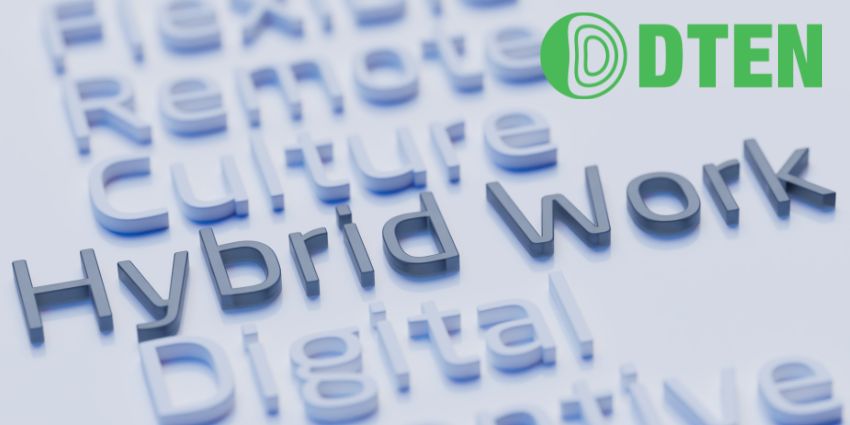Over the past three years, the pandemic has entirely reshaped the way we work, and for quite a while, the home office was the place to be. However, while remote workforces have become more common than ever, 2022 has seen a surge in employees returning to the office – either part-time or full-time.
As we leave 2022 behind and make and bravely step into 2023, I chatted with DTEN‘s Head of EMEA, Doug Remington, to help summarize return-to-the-office trends from the past year, and try to settle the great debate: Office or Remote?
What We’ve Seen
Before we dive into any pros and cons, let’s do a quick recap.
In 2022, we saw companies across all sectors experimenting with hybrid work, trying to figure out the specific blend that works well for them and their employees.
“Businesses were struggling to determine the right hybrid strategy that fits their organisation and for specific teams in terms of office-to-remote ratio,” Remington notes.
“That extended to their choice of a business communication platform as well, with some organisations deciding to go for one single, defined platform such as Zoom or Microsoft Teams, and others being more flexible, allowing a mix of more than one platform.”
Businesses also had to deal with the challenge of physically adapting their office spaces to hybrid work.
“Many questions arising this past year were concerned with the optimal way to build and design hybrid meeting rooms as opposed to what was previously used, and how to leverage technology to deliver meeting equity for both remote and in-office participants,” Remington explains.
Back to the Office?
Well, if balancing a hybrid work environment is so challenging, perhaps we should all just go back to the office altogether?
If only it were that simple. While the office environment has its share of advantages, returning to a full-time office presence at this point would be problematic for various reasons.
“The two primary downsides for employees when it comes to the office are time and cost,” Remington explains.
“The majority of employees want the option for flexibility when it comes to where they work. They don’t want to spend 10 to 15 hours a week commuting, and they don’t like the travel costs it incurs.”
“Also, many have become used to being closer to their families, friends, and pets at home. A full return to the office can negatively impact work-life balance. This all ties into employee wellbeing and mental health, which should be a high priority to all organsations who value their people,” he adds.
Remote It is, then?
One thing’s for sure: it would be a crying shame to waste such a catchy slogan as ‘Vote Remote.’ But, is going full-on remote really the best choice?
Well… probably not. While working remotely provides increased convenience and great freedom, doing it full-time has been proven to be less than perfect, and even harmful to workers.
“The big challenges here can be the social isolation and lack of human connection, which will not be the right fit for every employee,” Remington explains.
“It’s also challenging to run tight, effective teams when you do it completely remotely. Being together in the same space helps give that extra touch of in-person brainstorming, connection, and social interaction that fully-remote work doesn’t have.”
So, What’s in Store for 2023?
Simply put, something in between. Or in one word: hybrid.
But according to Remington, we’re not just talking more of the same. Hybrid Work and the return to the office are expected to change, evolve, and improve further.
One key element he mentions is the need for flexibility as businesses continue to experiment.
“I think organisations are going to develop more effective hybrid solutions in 2023, learning from their mistakes, pain points, and successes throughout 2022. They will solidify their hybrid strategy and invest in higher volumes of flexible meeting spaces,” he says.
“I also believe we’re going to see more meeting spaces being enabled for cloud collaboration, as well as just video conferencing. Sharing content, whiteboarding, annotating, and collaboration are essential for teams to be effective, creative, and productive in the hybrid model.”
Remington also predicts enhancements in the design of the office space, meant to make it more attractive for workers.
“If people are going to feel positive to spend the time and money travelling into the office – employers will have to create an environment that gives them something more, that they don’t get at their home office environment,” he notes.
“Hybrid work will continue its evolution in 2023,” Remington concludes. “The ‘best of both worlds’ approach it offers is hard to compete with.”







